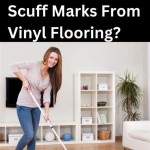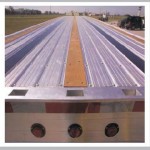Gray Spots on Hardwood Floor After Cleaning with Vinegar and Baking Soda: Causes and Solutions
Hardwood floors are a desirable feature in many homes, valued for their durability, beauty, and timeless appeal. Maintaining their pristine condition requires proper cleaning and care. While vinegar and baking soda are often touted as natural cleaning agents, their use on hardwood floors can sometimes lead to undesirable consequences, such as the appearance of gray spots. Understanding the reasons behind this phenomenon is crucial for preserving the integrity and appearance of hardwood flooring.
The combination of vinegar and baking soda creates a chemical reaction. Baking soda is a mild alkali, while vinegar is a weak acid. When combined, they react to produce carbon dioxide gas, water, and sodium acetate. While the fizzing action might seem effective for cleaning, this mixture can be detrimental to hardwood floors, particularly those with a polyurethane or wax finish. The gray spots that appear are often indicative of damage to the floor's finish or even the wood itself.
Understanding the Hardwood Floor Finish
The finish applied to hardwood floors acts as a protective barrier against moisture, scratches, and everyday wear and tear. Common types of hardwood floor finishes include polyurethane, varnish, lacquer, wax, and oil-based finishes. Each type has varying degrees of resistance to chemicals and abrasives. Polyurethane is a popular choice due to its durability and water resistance. Wax finishes, on the other hand, are more susceptible to damage from moisture and harsh chemicals. The type of finish on the floor significantly impacts how it reacts to cleaning agents like vinegar and baking soda.
When a floor with a polyurethane finish develops gray spots after cleaning with vinegar and baking soda, it often indicates that the finish has been compromised. The acidic nature of vinegar, even when diluted, can gradually erode the polyurethane layer, making it more susceptible to moisture penetration. The combination with baking soda might accelerate this process. The compromised finish then allows water and cleaning residue to seep into the wood, causing discoloration and the appearance of gray spots. With wax finishes, the issue is often more pronounced because wax offers less protection against moisture and chemicals.
It is important to note that the acidity of vinegar can vary depending on the concentration. White vinegar, commonly used for cleaning, typically has an acetic acid concentration of around 5%. While seemingly low, repeated use can still weaken the floor's finish over time. Furthermore, mixing vinegar with baking soda doesn't necessarily neutralize the vinegar's acidity; instead, it creates a different chemical solution that can still affect the finish.
The Role of Moisture in Gray Spot Formation
Moisture is a primary enemy of hardwood floors. Wood is a hygroscopic material, meaning it readily absorbs and releases moisture from the surrounding environment. Excessive moisture can cause wood to swell, warp, or even rot. The presence of gray spots after cleaning with vinegar and baking soda often signals that moisture has penetrated the floor's finish and reached the wood itself.
When the floor's finish is compromised, either by the acidic action of vinegar or general wear and tear, water and cleaning solutions can seep into the wood fibers. This moisture can react with tannins present in the wood, leading to discoloration. Furthermore, trapped moisture creates an ideal environment for mold and mildew growth, which can also contribute to the appearance of dark or gray spots. The combination of moisture, tannins, and potential microbial growth results in the unsightly discoloration that homeowners often observe.
The method of cleaning also plays a crucial role. Using an excessive amount of water or failing to thoroughly dry the floor after cleaning increases the risk of moisture penetration. Mops that are too wet can saturate the floor, allowing water to seep into the seams between boards and penetrate the finish. Proper cleaning techniques involve using a slightly damp mop or cloth, followed by immediate drying with a clean, absorbent towel.
Older hardwood floors are often more susceptible to moisture damage due to the natural aging process and potential weakening of the finish over time. Prior damage to the finish, such as scratches or worn areas, can also provide entry points for moisture. Regularly inspecting the floor for signs of wear and tear and promptly addressing any damage can help prevent moisture-related problems.
Alternative Cleaning Methods for Hardwood Floors
Given the potential risks associated with using vinegar and baking soda on hardwood floors, safer and more effective alternatives should be considered. Understanding the appropriate cleaning methods for different types of hardwood floor finishes is essential for maintaining their beauty and longevity. It is generally recommended to use cleaning products specifically formulated for hardwood floors.
For floors with a polyurethane finish, a neutral pH cleaner is typically the best option. These cleaners are designed to remove dirt and grime without damaging the finish. When selecting a cleaner, look for products that are water-based and specifically labeled as safe for polyurethane finishes. Avoid using cleaners that contain harsh chemicals, ammonia, or abrasive ingredients, as these can dull or damage the finish.
Waxed hardwood floors require a different approach. Avoid using water-based cleaners on waxed floors, as water can penetrate the wax and cause cloudiness or discoloration. Instead, use a dry mop or a cleaner specifically formulated for waxed floors. Periodically, the wax finish may need to be reapplied to maintain its protective qualities and luster.
Dusting or vacuuming regularly is crucial for removing loose dirt and debris that can scratch the floor's finish. Use a soft-bristled brush or a vacuum with a floor attachment to avoid scratching the wood. Placing mats at entryways can also help trap dirt and prevent it from being tracked onto the floor. Promptly cleaning up spills is essential to prevent staining and moisture damage. Use a clean, absorbent cloth to blot the spill and avoid rubbing, which can spread the stain.
For stubborn stains or scuff marks, consider using a specialized hardwood floor stain remover or scuff mark eraser. Always test any cleaning product in an inconspicuous area first to ensure that it does not damage the finish or discolor the wood. Professional hardwood floor cleaning services are also available and can provide deep cleaning and refinishing services to restore the floor's original beauty.
Preventative measures also contribute significantly to preserving the condition of hardwood floors. Using furniture pads under furniture legs can prevent scratches and dents. Avoiding wearing shoes with high heels or cleats on the floor can also minimize wear and tear. Controlling humidity levels in the home can help prevent excessive expansion and contraction of the wood, which can lead to cracks or gaps.
In summary, the appearance of gray spots on hardwood floors after cleaning with vinegar and baking soda is often a sign of damage to the floor's finish and potential moisture penetration. The acidic nature of vinegar can erode the finish, allowing moisture to seep into the wood and cause discoloration. Safer and more effective cleaning methods, such as using neutral pH cleaners or specialized hardwood floor cleaning products, should be used to maintain the beauty and longevity of hardwood floors. Regular maintenance, preventative measures, and prompt attention to spills and damage are also essential for preserving the integrity and appearance of hardwood flooring.

The Best Way To Remove Stains From Wood Floors Maria Louise Design

How To Remove Stains From Wood The Craftsman Blog

How To Remove Pet Stains From Hardwood Floors

Options For Fixing The Dreaded Pet Stains On Wood Floors Floor Business

The Best Way To Remove Stains From Wood Floors Maria Louise Design

Top Tips On How To Remove Black Stains From Hardwood Floors Leader Blog

How To Remove Pet Urine Stains From Wood Floors Guaranteed

How To Remove Water Stains From Wood Floors Discount Flooring Depotdiscount Depot Blog

What Would You Tell Her Tiktok K L E A N Dirty Hardwood Wood Floor Question Tips

Removing Dog Urine Stains From Hardwood Floors Hometalk
Related Posts








